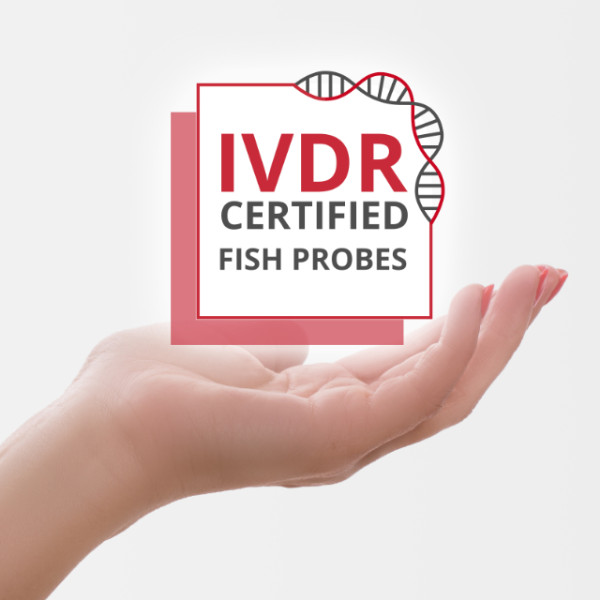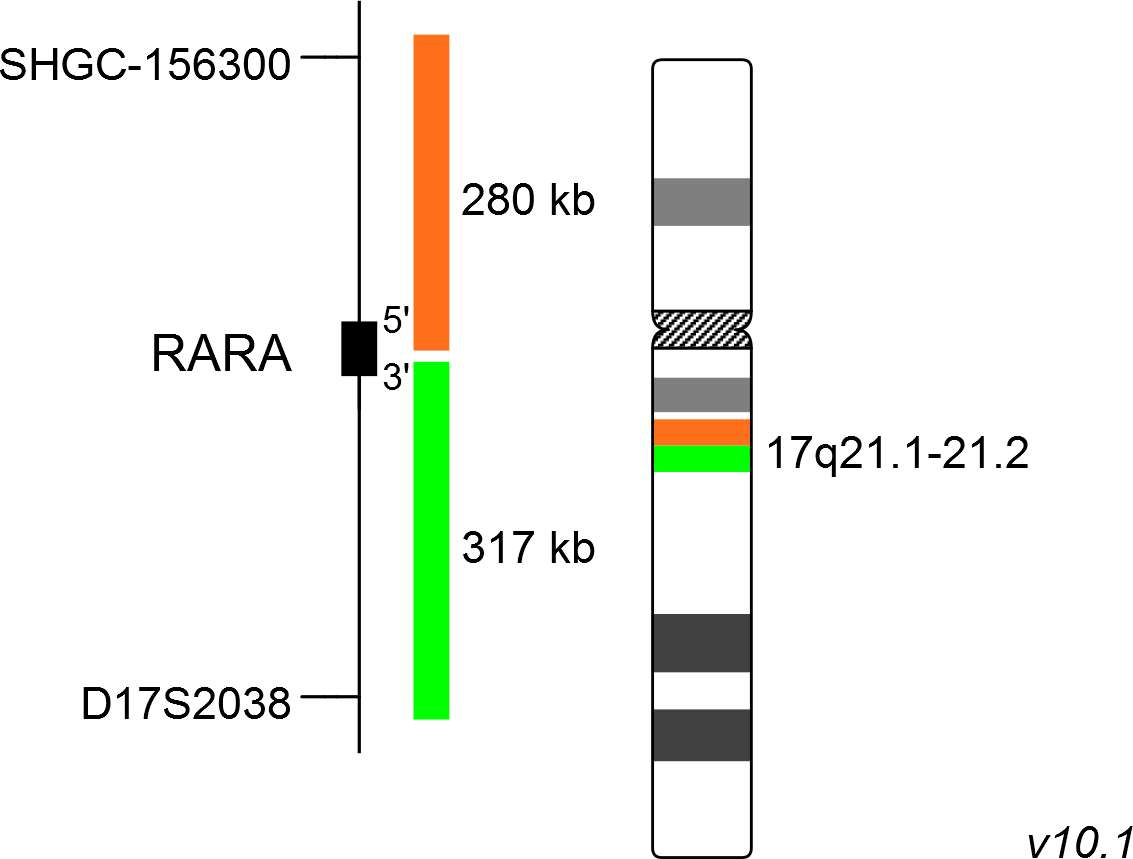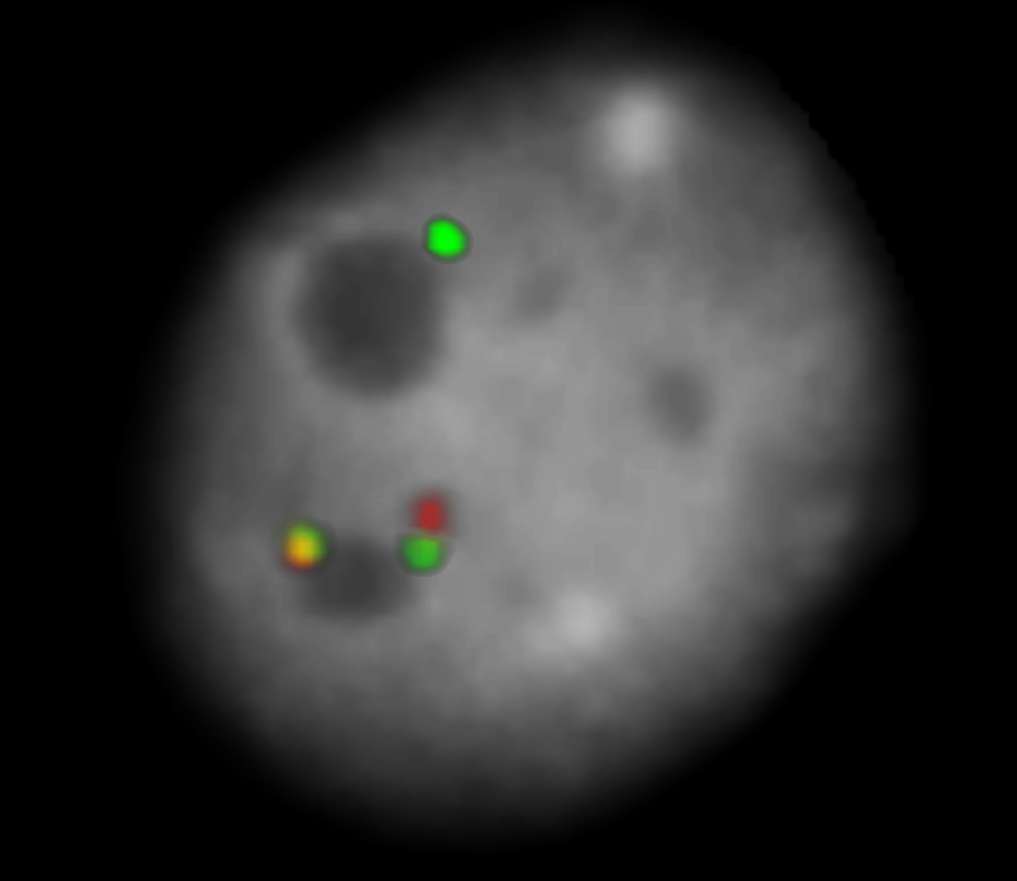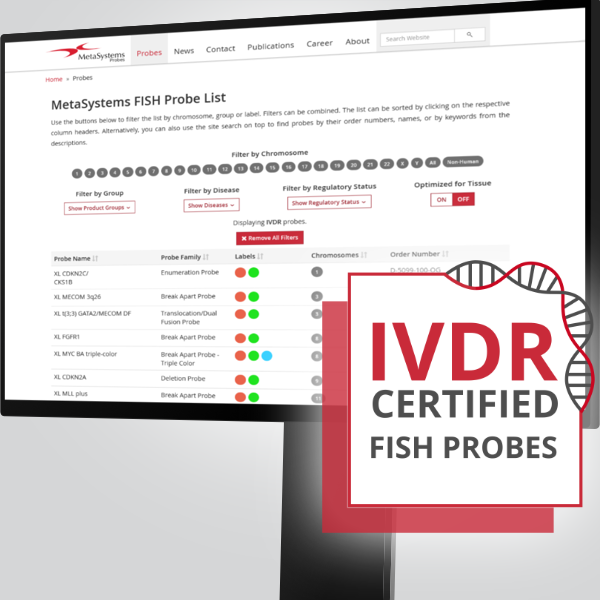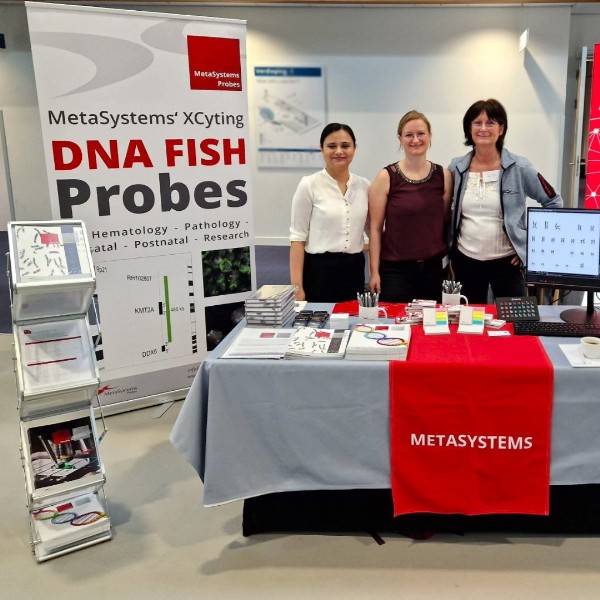Acute promyelocytic leukemia (APL) is considered as a subtype of acute myeloid leukemia (AML) and accounts for about 5-8% of all AML cases. The most frequent aberration in APL is t(15;17) which results in the formation of the promyelocytic leukemia (PML) - retinoic acid receptor alpha (RARA) fusion gene (PML-RARA). Around 98% of all APL cases are characterized by PML-RARA, whereas translocations affecting RARA and other genes have been identified in only 1-2% of APL cases. Known fusion genes are ZBTB16-RARA, NPM1-RARA, NUMA1-RARA, STAT5B-RARA, PRKAR1A-RARA, BCOR-RARA and FIP1L1-RARA. ZBTB16-RARA comprises about 0.8% of all APL cases, the other rare fusions occur with lower frequency. Cryptic rearrangements resulting in the PML-RARA fusion gene are observed regularly, but also insertions of RARA into other locations have been found in a minority of APL cases.
RARA is a nuclear hormone receptor which forms heterodimers with the retinoid X receptor alpha and is involved in the regulation of promyelocyte differentiation. RARA fusion genes interfere with myeloid differentiation and contribute to the development of APL. The majority of APL patients are responsive to therapeutic doses of all-trans retinoic acid (ATRA) and arsenic trioxide (ATO) associated with chemotherapeutic drug regimen. Patients with ZBTB16-RARA or STAT5B-RARA fusions are resistant to ATRA and ATO.
The FISH break apart assay is a valuable tool for the detection of RARA rearrangements independent of the translocation partner.
Clinical Applications
- Acute Myelogenous Leukemia (AML)
